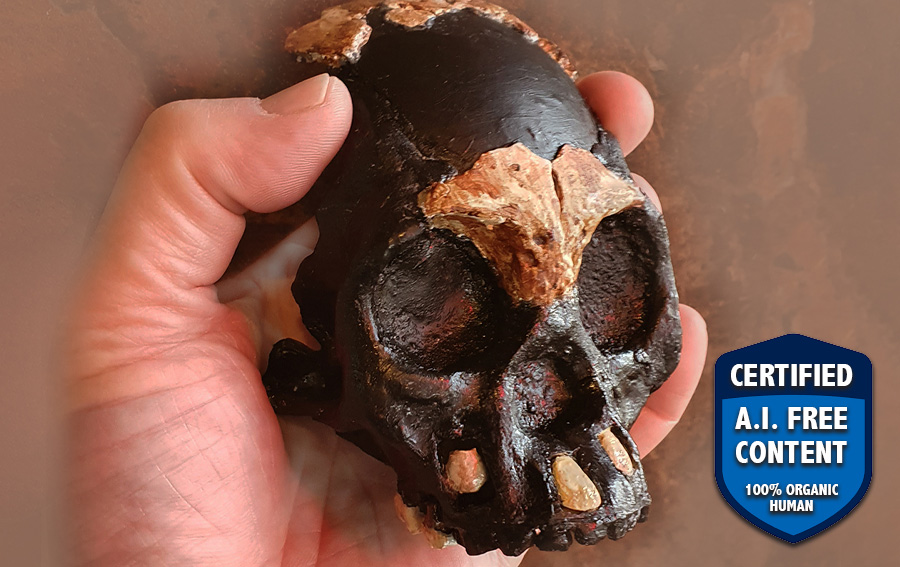Early Ancestors Buried Dead & Left Mysterious Engravings - ATLANTIS RISING THE RESEARCH REPORT (original) (raw)


New observations and excavations in South African caves have found that Homo naledi, an early human ancestor, intentionally buried their dead and made crosshatch engravings in the cave walls nearby, 100,000 years before humans, almost 300,000 years ago (https://www.biorxiv.org/content/10.1101/2023.06.01.543135v1).
Fossils of Homo naledi were first discovered in these caves 10 years ago. The new findings,, are now the earliest evidence of mortuary and meaning-making behaviors in human ancestors. Until now, scholars believed that the mental capacity behind complex cultural behaviors like burial and mark-making required a larger brain, like those of Neanderthals and Homo sapiens. And yet, Homo naledi’s brain was only about one-third the size of humans’.
“It’s not how big your brain is, it’s how you use it and what it’s structured for,” says Hawks, an anthropologist at the University of Wisconsin–Madison who has helped lead the Homo naledi team since the beginning.
Not only did H. naledi have a smaller brain, but the species also had a smaller frame than their human cousins. Based on the skeletons they have excavated, archaeologists estimate the average H. naledi individual weighed less than 90 pounds and stood under 5 feet tall. That would make navigating the narrow, cramped passageways of the Rising Star Cave System where their remains have been found easy for H. naledi. But for human archaeologists and researchers, the cave site is a challenging environment to study and excavate.
The chambers where the burials and crosshatch markings were found are in the Dinaledi subsystem of the cave, about 50 meters from the main entrance where archaeologists shimmy in. The team found two burial sites, one near the entrance to the subsystem and another further back in another chamber. While limestone does erode and crack over time, Hawks says that those natural patterns tend to be easily recognized by their complex “elephant skin” texture. Instead, the artificial engravings are a few bold lines on a mostly flat surface, made of multiple striations that appear to have been made with a tool.
For Hawks, the most convincing line in the panel occurs near a spot in the limestone that has a natural waved texture due to older algae fossils in the walls. The lines making up these parts of the engravings are irregular and appear to have been gone over again and again, as if their creator were persistently trying to etch the markings in as they were diverted by the bumpy texture on the wall.
“That’s not natural,” Hawks says. “That, to me, is really convincing that somebody was making these, and where the rock gets uneven, they had more difficulty controlling and keeping the mark in the same line.”
he Archaic period.

